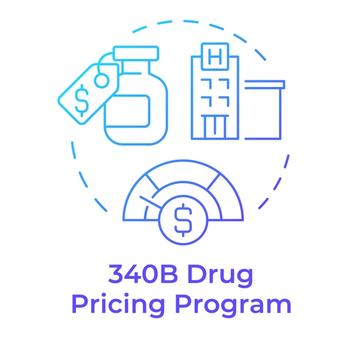
ICER Releases List of Drugs for Fair Access Review
Included in this review will be 11 drugs that ICER assessed for cost-effectiveness in 2022. New this year is an assessment for consumer accessibility of drugs, including the burdens of prior authorization and patient cost-sharing measures.
The Institute for Clinical and Economic Review (ICER) has
ICER officials will conduct an analysis based on criteria that has determined are cornerstone of fair access: cost-sharing, clinical eligibility, step therapy policies, and provider qualification restrictions. The final report is expected in December 2024.
This year’s analysis will include the top 10 commercial formularies by covered lives; data obtained from payers and MMIT’s Market Access Analytics solution. New this year, ICER will analyze data from IQVIA that will explore the rates of denials, appeals, and percentage of claims by patient out-of-pocket cost ranges for the drugs across commercial payers.
For the 2024 report, ICER is adding evaluation of fair access criteria from the 2020 white paper related to the transparency of cost sharing (i.e. tiering) and of clinical eligibility criteria for prospective plan enrollee.
This review will consider consumer accessibility, including the burdens of prior authorization and patient cost-sharing measures.
Last year, ICER did an exploratory analysis on how transparent plans were from a patient perspective, in other words, could patients and consumers find out information about what drugs were covered and what their costs would be.
In an interview last year, ICER President and CEO Sarah K. Emond indicated that the organization wanted to do look into cost sharing because “I think this is the crux of the access issue when it comes to payer policies.”
In the protocol, ICER officials said a fair price for a drug will be determined according to whether the most recent net price of a drug falls at or below ICER’s Health Benefit Price Benchmark (HBPB) at the $150,000 per equal value of life years gained (evLYG) or quality of life year (QALY) threshold.
The plans that will be part of the review include:
- CVS Health (Aetna)
- Express Scripts PBM
- UnitedHealth Group
- OptumRx
- Kaiser Foundation Health Plans
- Elevance Health
- Health Care Service Corp
- Highmark
- Blue Shield of California
- Veterans’ Health Administration
As in previous reviews, ICER will share their initial findings with payers and patient organizations. In previous assessments, payers have changed coverage policies to align with ICER’s fair access measures. Last year, one
In ICER’s review from January 2023, five payers revised policies for 11 drugs in ways that bring coverage in line with the research institute’s fair access criteria. Most of the changes made reflect tier placement, but some reflected clinical eligibility criteria. And in ICER’s review from November 2023, one payer revised coverage for one drug.
“More attention needs to be paid to the grand bargain of a fairly priced drug being on a on a low tier with low cost-sharing. We shouldn’t be punishing patients when the manufacturer has done the right thing with a fairly priced drug,” Emond said last year.
Newsletter
Get the latest industry news, event updates, and more from Managed healthcare Executive.





















































